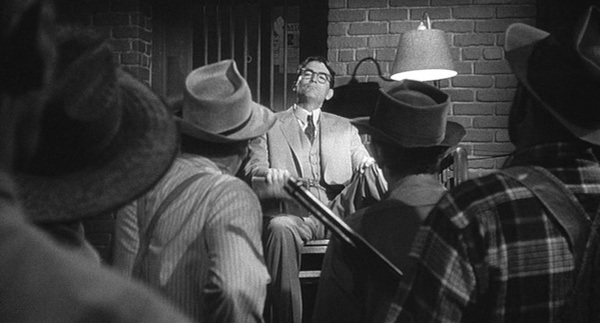

Because of Scout’s unique physical perspective, we realize that we are witnessing the events of the proceeding through not only from her, but also the African American’s eyes. During Tom Robinson’s trial, Scout, Jem and Dill watch on from the balcony of the courtroom, where the African American community is forced to witness the trial, segregated from their white neighbors. Lee continually reminds us of whose perspective we are reading the story through, often in very clever and unique ways. This is yet another example of the value of a child’s perspective. When, however, certain components are not stated, but rather deduced, the reader becomes engaged. When every element of a story is explained explicitly, the reader is likely to become bored. This is an example of Lee’s brilliance as a writer. Though Scout never says so, the reader is left to surmise that the teacher, fresh out of college, is more than likely “out of her element” in the backwoods of Alabama. When describing her first day of school, Scout relates how their new teacher’s repeated attempts to educate them are thwarted, and how she ends up crying at her desk. In the narration of “To Kill a Mockingbird”, Scout often relates events that occur, and individuals’ reaction to them, but rarely if ever offer any analysis or reasoning for either. This fact adds a certain raw honesty to the plot of “To Kill a Mockingbird.” A child is not likely to lie about events for no reason, so the reader perceives the story with an added level of credibility. A child relaying an event that happened in his/her life might devote all of their description to something an adult would regard as trivial, and gloss over something an adult would deem crucial. Children, however, have a different idea of importance and structure than adults.

One recognizes right away that if an adult were telling this story, the first few sentences would no doubt reference Tom Robinson or Bob Ewell.

The originality of “Mockingbird’s” perspective can be seen in the very first few sentences, when Scout refers to the summer her brother Jem broke his arm. The truly compelling factor in this is that while adults tend to “tailor” their words to fit a social form, children speak whatever they think, regardless of how it will be perceived. This is exactly the case with Scout in “To Kill a Mockingbird.” She relays exactly what she sees, and attempts to make sense of it all through a child’s understanding. A scout, in essence, observes and gathers information and relays it to others. The nickname “Scout” is a clever indication of the perspective of the story. The story of “To Kill a Mockingbird” is told in first person by Jean Louise Finch, or “Scout”, a young girl living in Alabama during the time of the Great Depression.


 0 kommentar(er)
0 kommentar(er)
